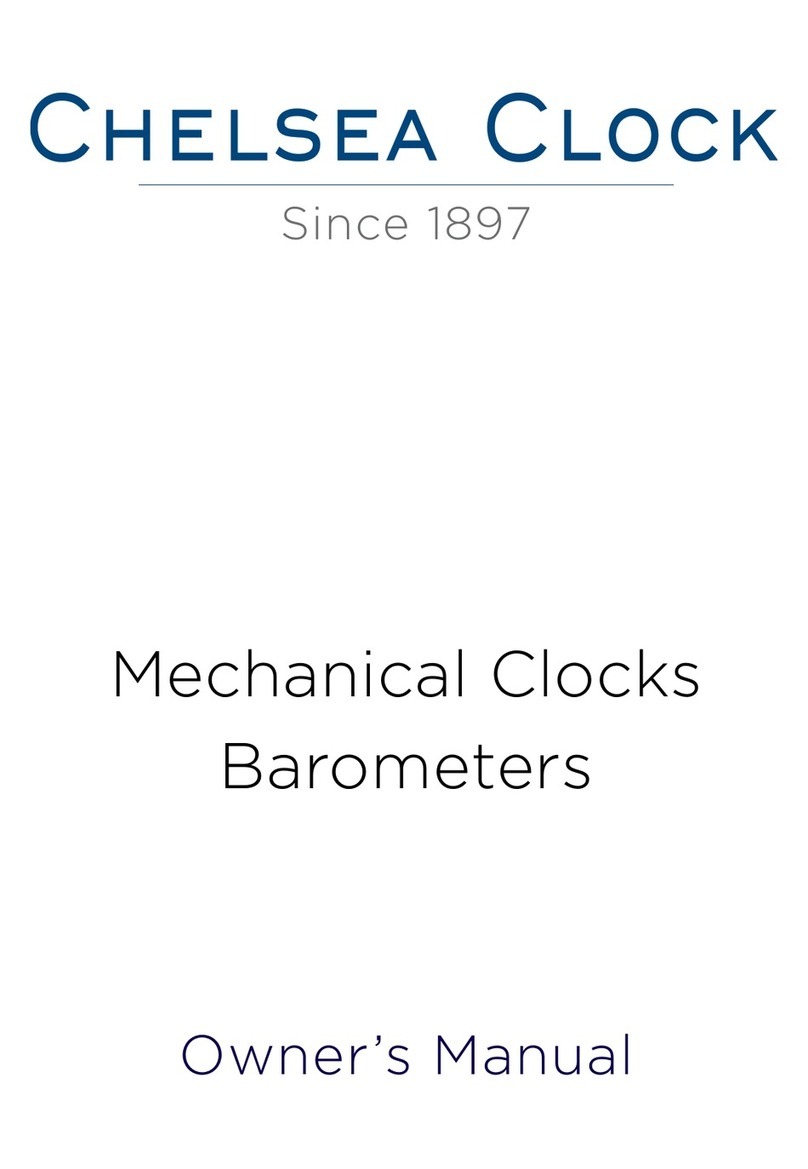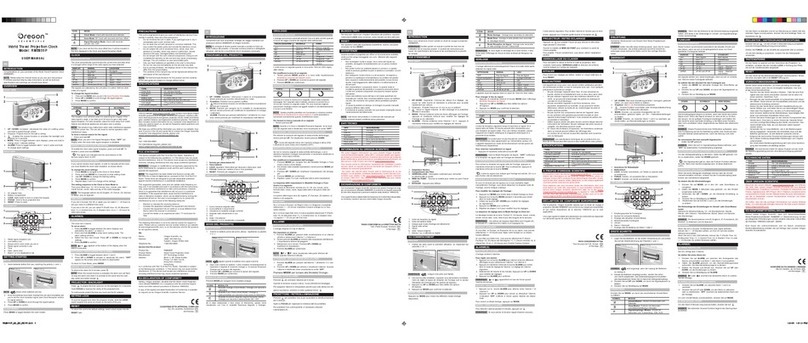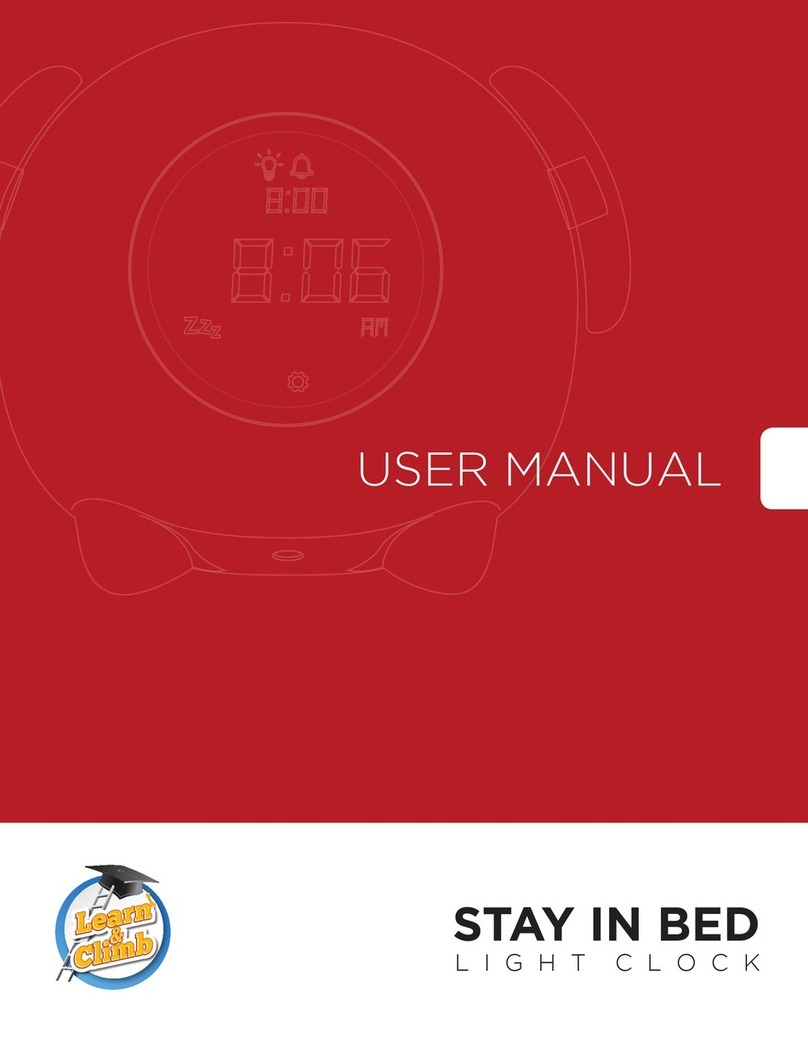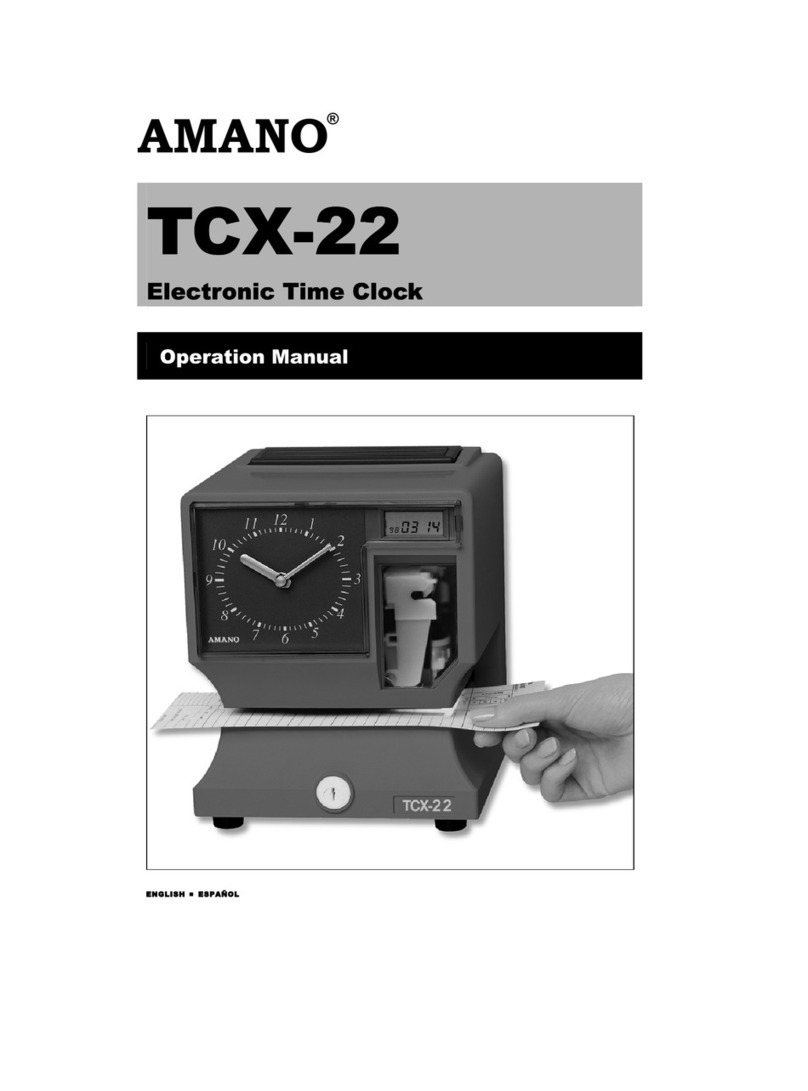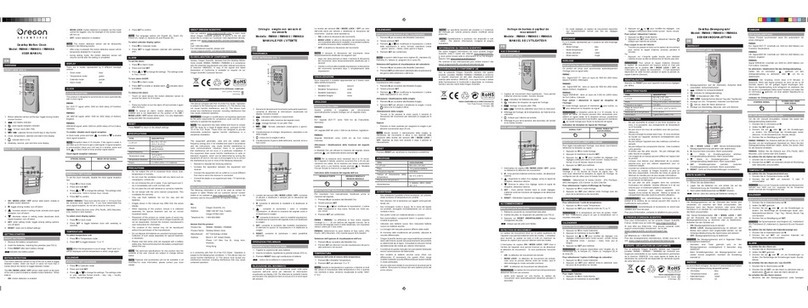Chelsea Shipstrike User manual

PRODUCT MANUAL
SHIPSTRIKE CLOCK AND BAROMETER
A Chelsea clock is an exquisite time machine. Each is a work of art handcrafted by elite master clockmakers. For more
than a century, Chelsea craftsmen have created instruments whose beauty and workmanship enhance their extraordinary
functionality and durability.
Chelsea clocks sail the seas with the United States military, grace the ocean’s most impressive yachts, and bear witness
to meetings of heads of state, presidents, princes, and kings of rock and roll. Chelsea clocks are treasured by collectors,
cherished from one generation to the next, and given as gifts to some of the luckiest people in the world.
Whether you purchased a handsome Chelsea clock or received one as a gift, you can be sure that Chelsea’s master
clockmakers have taken exceptional care to produce one of the world’s finest instruments.
Congratulations
Shipstrike Mechanical Clock
Two Hundred Eighty Four Everett Avenue, Chelsea, Massachusetts 02150-1515 | Tel 617 884-0250 | chelseaclock.com
WINDING THE CLOCK
Clocks leave our factory fully wound. Remove the black tube from the winding arbor on the front of the clock (save the
tube and replace it when shipping the clock or when you are away for extended periods). Each full winding will power
the clock for approximately eight days; however, for convenience we suggest you routinely rewind it at about the same
time every week.
SETTING THE TIME
To set the time, turn the minute hand clockwise to the correct time, stopping at each hour and half-hour point to allow
the bells to strike their full count. The hour hand should never be moved manually; all adjustments should be made by
moving the minute hand.
When moving the minute hand, the correct strike count may not sound at the first chime point, but this will self-correct
at the next full-hour point. Do not force the hands when setting the time. If they lock at any point, turn the minute hand
backwards through one striking position, then continue as above.
On the Shipstrike a “warn” occurs at 20 minutes past the hour and 10 minutes before the hour. This means that for the ten
minutes prior to each striking point, the gears and levers of the striking mechanism fall into correct position. Thus it is
advisable that whenever the striking clock is to be reset, the minute hand only should be slowly rotated forward (clock-
wise) to the next striking point and then the clock allowed to strike its full count. Adjustments should never be made
during a strike zone, only from 5 to 15 minutes past the hour or 25 to 15 minutes before the hour.
SILENCING THE CHIME
You can turn off the striking mechanism by sliding the pin near the “11” on the clock’s dial fully away from the bell sym-
bol. Do not shut off the strike while the clock is striking. To resume striking mode, slide the pin fully toward the bell.

Two Hundred Eighty Four Everett Avenue, Chelsea, Massachusetts 02150-1515 | Tel 617 884-0250 | chelseaclock.com
SETTING THE TIME
After inserting the battery, wait until the sweep second hand points to “12,” then promptly remove the battery. Set the
time a few minutes ahead of the actual time by turning the setting knob on the back of the movement. Do not move the
hands backward which may cause them to lock. Once the clock’s time coincides with the actual time, re-insert the bat-
tery and return the movement to its case. Do this by aligning the notch on the top of the dial with the notch on the clock
case and sliding it back into position. Carefully screw the bezel back onto the clock.
SILENCING THE CHIME
To turn the chime on or off, slide the green switch on the back of the movement. Moving the switch exposing the bell
symbol will reactivate the chime. Do not turn off the chime while it is striking which can damage the mechanism. Note: it
is normal for striking to occur up to 30 seconds before or after the precise time.
THE SHIP’S BELL CODE
Mariners have used a unique bell code to tell time at sea for hundreds of years. The code is based on the crew’s typical
workday routine while the vessel is under way. A ship at sea requires constant attention throughout the day’s twenty-
four hours. The day is therefore divided into six four-hour periods, each called a “watch.” Similarly, the crew is segmented
into three divisions. Division members then stand their individually assigned duties on two watches per day, with eight
hours off duty between watches. To rotate each division’s watch times, the Evening Watch is periodically divided into
two watches. These are called Dog Watches because they “dog” the watch schedule for all divisions ahead by one watch
period.
First Watch 8:00 p.m. to 12:00 a.m.
Mid-Watch (also Black Watch) 12:00 a.m. to 4:00 a.m.
Morning Watch 4:00 a.m. to 8:00 a.m.
Forenoon Watch 8:00 a.m. to 12:00 p.m.
Afternoon Watch 12:00 p.m. to 4:00 p.m.
Evening Watch 4:00 p.m. to 8:00 p.m.
The watch officer struck the ship’s bell every half hour to apprise the crew of the time. A single bell denoted the end of
the first half hour and one bell was added each half-hour. Eight bells therefore signaled the end of each four-hour watch.
Like centuries of seafarers, you’ll soon know the time when the clock chimes, even if you can’t see it.
8 bells 12:00 4:00 8:00
1 bell 12:30 4:30 8:30
2 bells 1:00 5:00 9:00
3 bells 1:30 5:30 9:30
4 bells 2:00 6:00 10:00
5 bells 2:30 6:30 10:30
6 bells 3:00 7:00 11:00
7 bells 3:30 7:30 11:30
To install the battery and set the time, please follow the instructions above for the Striking Quartz Clock
INSTALLING THE BATTERY
The Chelsea Shipstrike clock with quartz movement requires a size "AA" alkaline battery. A fully charged battery should
operate the clock for about a year. Please note that old batteries left in the clock may leak and cause damage not cov-
ered by the warranty.
Unscrew the brass bezel (your model may have a hinged bezel) that covers the clock face. Grasp the rim of the dial’s
face and gently pull forward to remove the dial and movement from the case. The movement is affixed to the back of the
dial. Insert the battery, observing the correct polarity as indicated by the plus (+) and minus (–) symbols. The movement
will start immediately.
Shipstrike Quartz Clock
Non-Striking Quartz Clock

Two Hundred Eighty Four Everett Avenue, Chelsea, Massachusetts 02150-1515 | Tel 617 884-0250 | chelseaclock.com
HOW IT WORKS
A barometer measures changes in atmospheric pressure, which you can think of as the weight of the air above you. Chang-
es in atmospheric pressure at any given point typically foretell changes in the weather. Weather watchers therefore note
a barometer’s reading, then observe how much and how fast the reading rises or falls. Rising pressure signals improving
weather, while falling pressure portends deteriorating weather. The barometer works best when mounted indoors where air
pressure is the same as that outside, but the instrument is less subject to the elements.
The Chelsea Shipstrike barometer is an aneroid barometer. This means it measures atmospheric pressure mechanically,
without mercury or other fluids. Instead it uses a vacuum and a hollow metallic diaphragm. Pressure changes on the
diaphragm cause the black indicator hand on the dial to move. You can manually position the stationary gold hand over
the black indicator hand, and return later to note how much the pressure has changed and whether it is rising or falling.
Barometers measure atmospheric pressure in inches, millibars, and centimeters. At sea level, normal atmospheric pres-
sure is approximately 29.92 inches, 1014 millibars, or 76 centimeters. At higher elevations, the average pressure will be less
because there is less air pressure overhead. Normal weather variations cause the pressure to rise or fall an inch or less
so you may see little movement of the black hand for several days at a time. A passing storm often brings rapidly falling
pressure.
SETTING FOR LOCAL ALTITUDE
When a Chelsea barometer leaves our factory it is adjusted to register pressure at sea level, which is the standard way to
measure barometric pressure regardless of location or altitude. Since atmospheric pressure decreases as altitude increas-
es, if you are in a higher altitude location it will be necessary for you to adjust the barometer to give you a reading cor-
rected to sea level. To do this, call the local weather bureau and ask for the present barometer reading. Then adjust the
barometer’s black indicator hand to the reading given. This can be accomplished by turning the small screw on the back
of the barometer case. If you are at an altitude of 5,000 feet or greater, the barometer should be adjusted professionally.
LIMITED WARRANTY
This new Chelsea instrument is warranted against defects in material and workmanship for two (2) years from the date of
original purchase. In the event of any such defect, return the instrument postage prepaid, along with an explanation
of the defect to the address set forth below, and we will repair or replace, it at our option and expense. Any defects or
damage caused by misuse, accident, tampering, or user negligence is not covered by this warranty. Be certain to care-
fully and securely pack the instrument for return. We will not be responsible for damage during shipment. The repaired
or replacement instrument will be returned postage prepaid. All implied warranties covering merchantability, fitness for
particular purpose, or otherwise are limited in duration to two (2) years from the date of original purchase. The repair
or replacement of any defect is the exclusive remedy under this warranty. In addition, the warrantor shall not, under any
circumstances, be liable or responsible hereunder for consequential, incidental, indirect or special damages. Note that
some states do not allow limitations on how long an implied warranty lasts, or the exclusion or limitation of incidental or
consequential damages, so the foregoing limitation or exclusion may not apply to you. This warranty gives you specific
legal rights; you may also have other rights that vary from state to state.
CARING FOR THE CASE
Chelsea Clock cases are constructed of exceptionally high quality brass, highly polished to a fine finish, and then care-
fully lacquered for long-lasting protection. The chemicals in fingerprints and even ordinary dust may eventually mar this
finish. Therefore, we suggest cleaning the case weekly with a clean soft cloth. Do not use polish, cleaner, or other liq-
uids that could tarnish or pit the finish. Treated with this care, the lacquer coating will not be broken and the clock case
should retain its bright appearance for many years.
Barometer
SERVICING THE CLOCK OR BAROMETER
Under normal operating conditions, the clock should be cleaned, oiled, and adjusted about every five to seven years. Con-
ditions such as extreme heat, cold, dust, and even idleness can adversely affect lubricating oils and therefore necessitate
more frequent servicing. A Chelsea Clock is a precision instrument that should only be serviced by our master clockmak-
ers. When the clock or barometer requires cleaning or service, we urge you return it to our factory repair center where
an experienced master clockmaker will insure careful, efficient, and guaranteed work. Please take extra care to double-
box the clock to avoid damage in transit. You can find further packing and shipping advice online at www.chelseaclock.com.
Table of contents
Other Chelsea Clock manuals
Popular Clock manuals by other brands
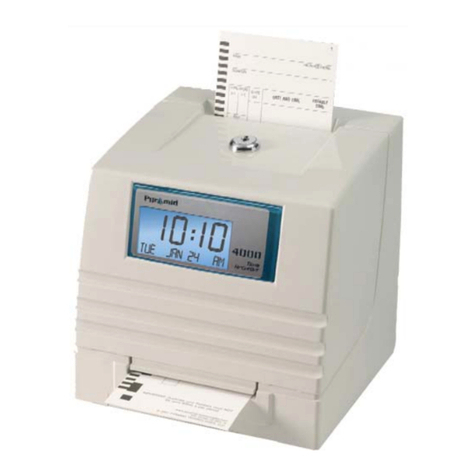
Pyramid
Pyramid 4000 Installation and operation instructions
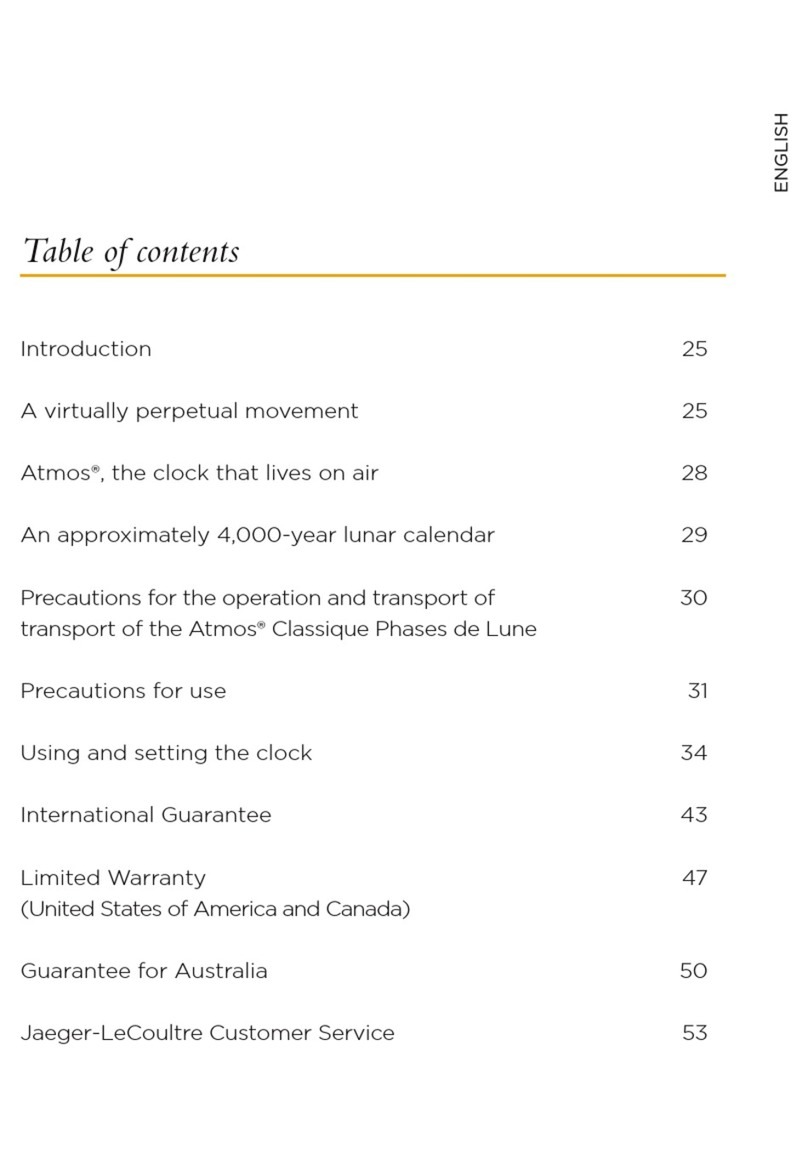
Jaeger-leCoultre
Jaeger-leCoultre CLASSIC MOON manual
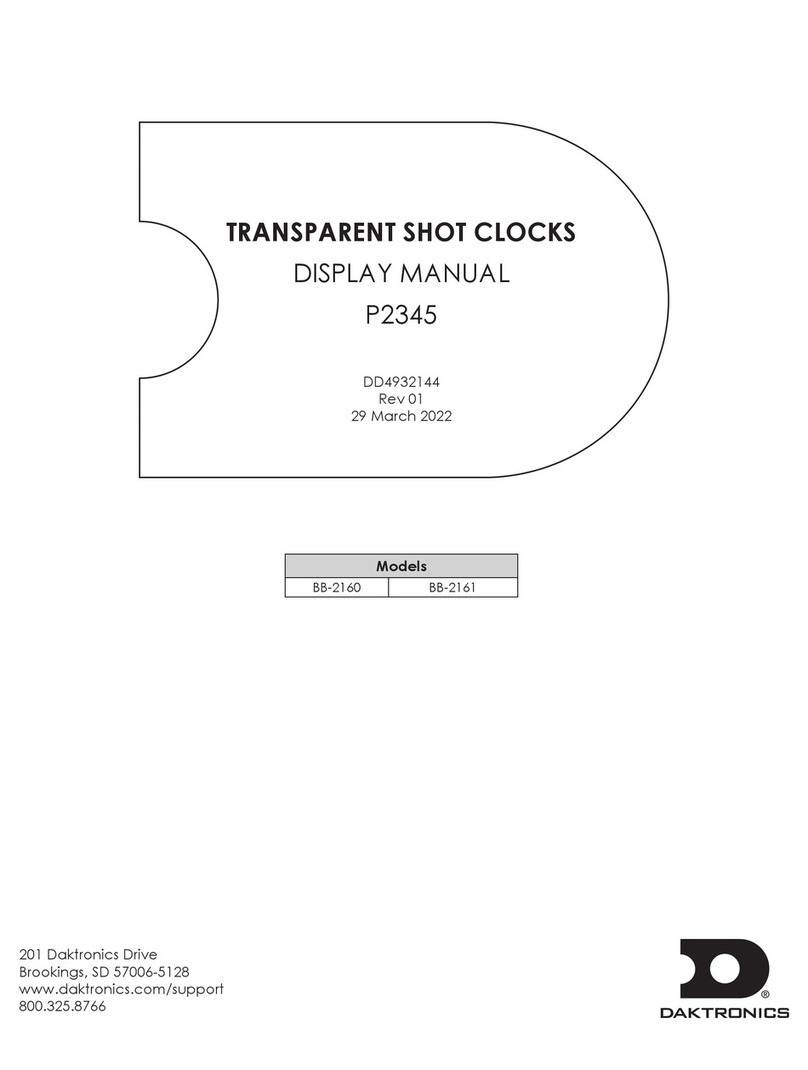
Daktronics
Daktronics P2345 DISPLAY MANUAL

American Time
American Time H004595 Installation and operator's manual

L’Epee
L’Epee LA TOUR User instructions
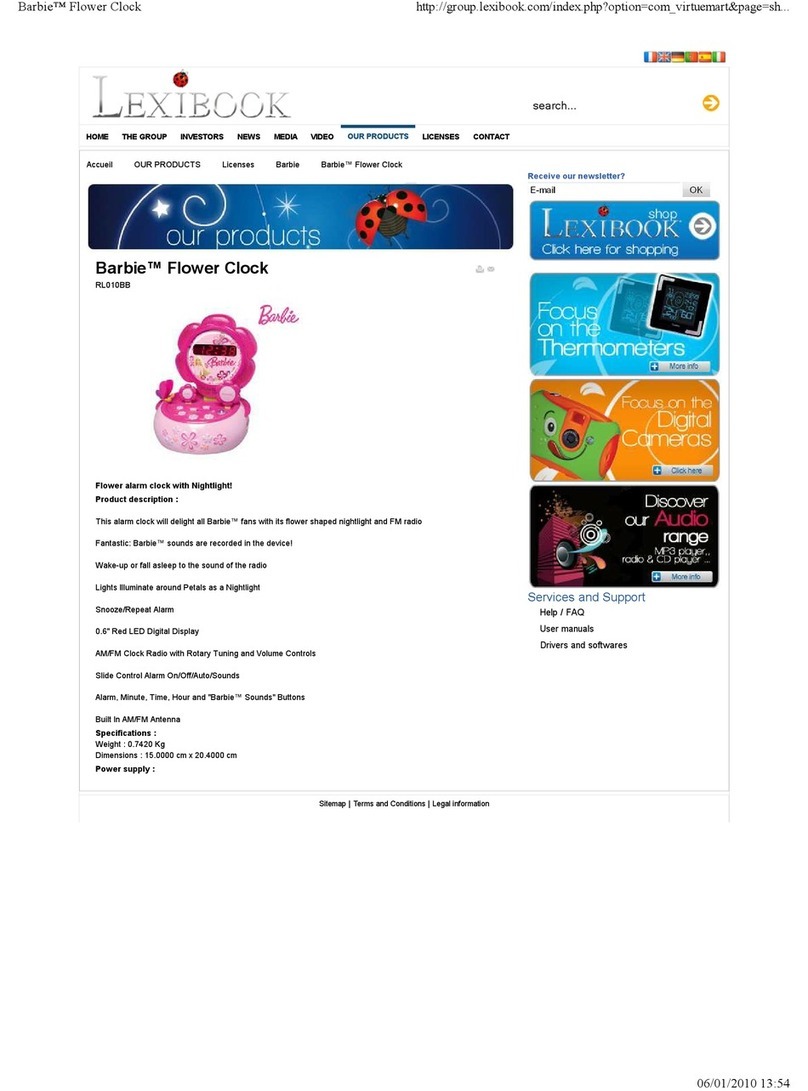
LEXIBOOK
LEXIBOOK Barbie Flower Clock RL010BB Specifications
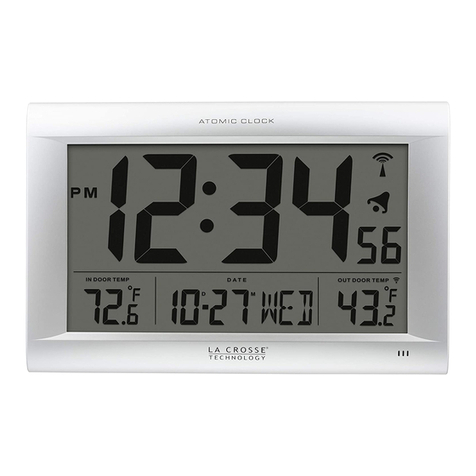
La Crosse Technology
La Crosse Technology 513-1311OT Faqs
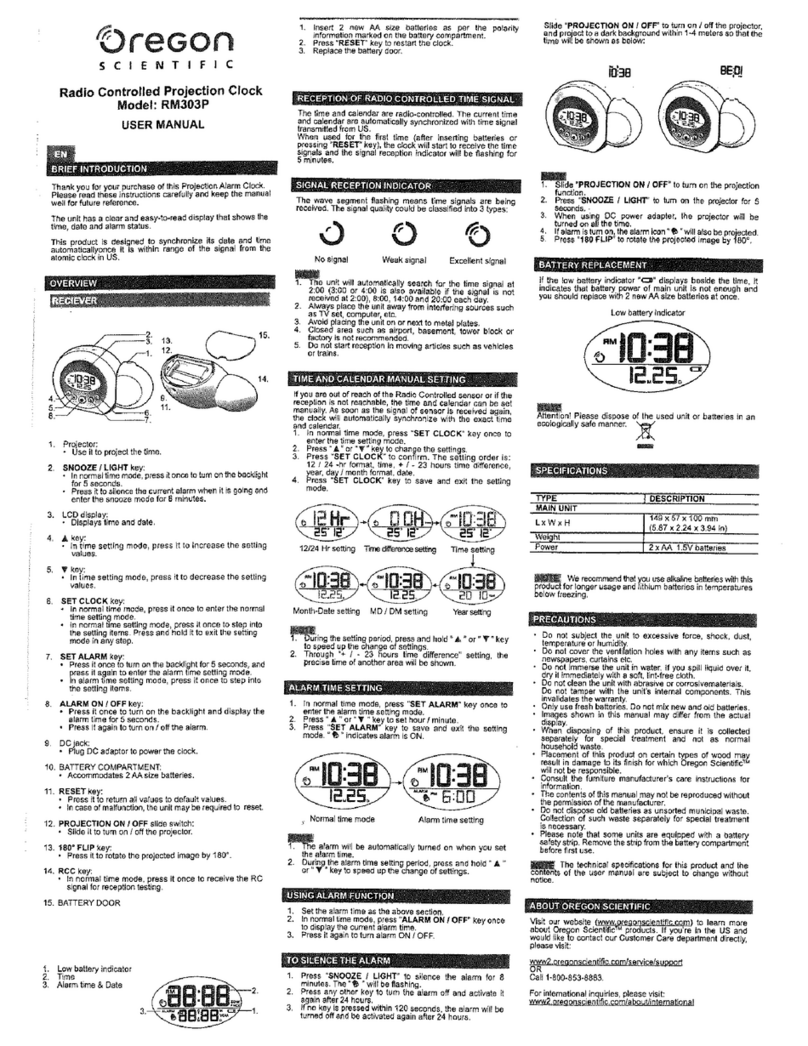
Oregon Scientific
Oregon Scientific RM303P user manual
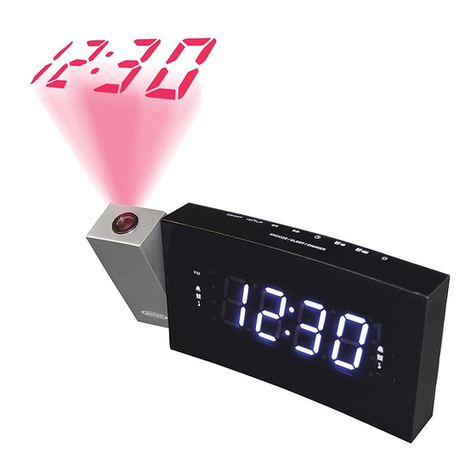
Jensen
Jensen JCR-238 user manual
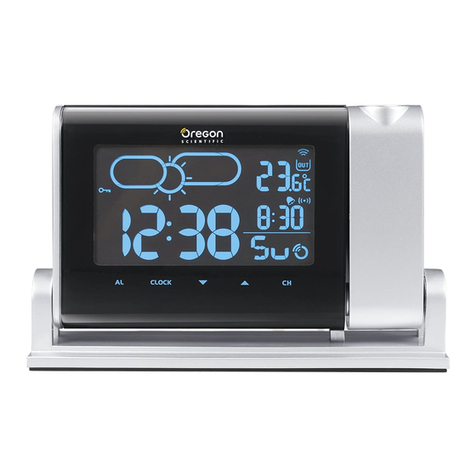
Oregon Scientific
Oregon Scientific BAR339P user manual
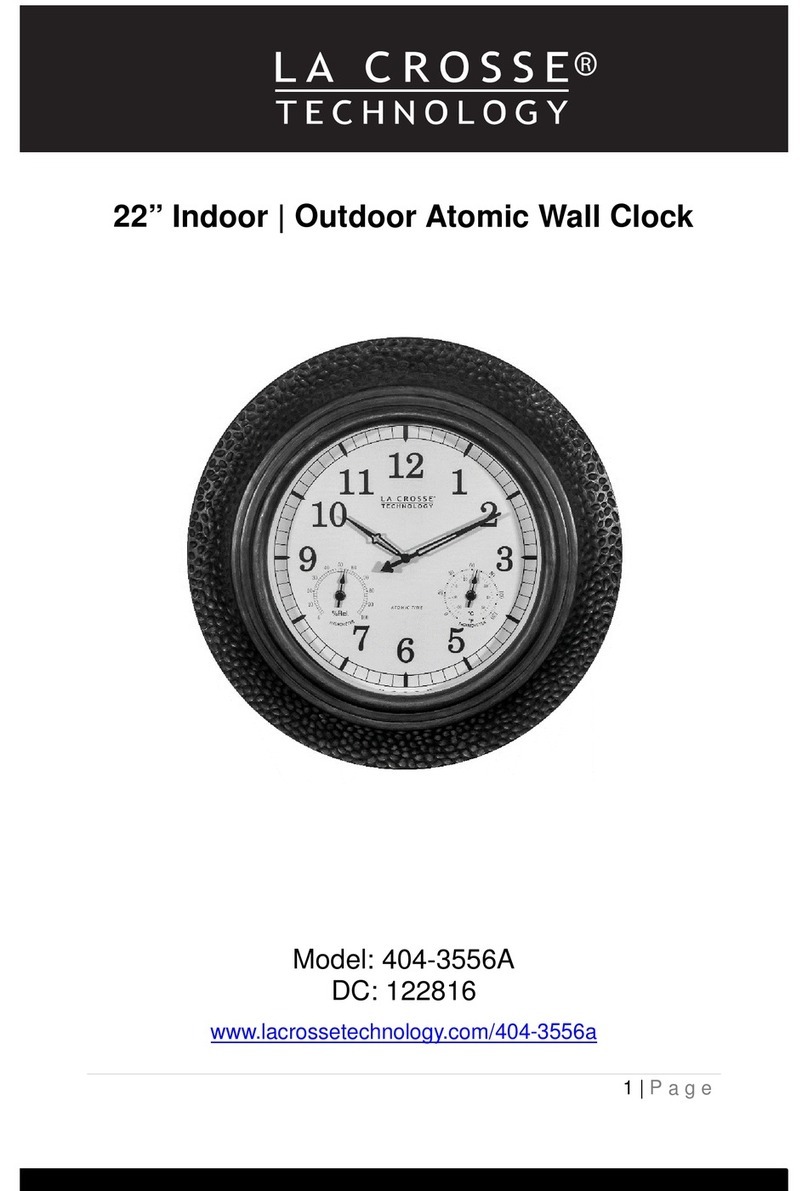
La Crosse Technology
La Crosse Technology 404-3556A user manual
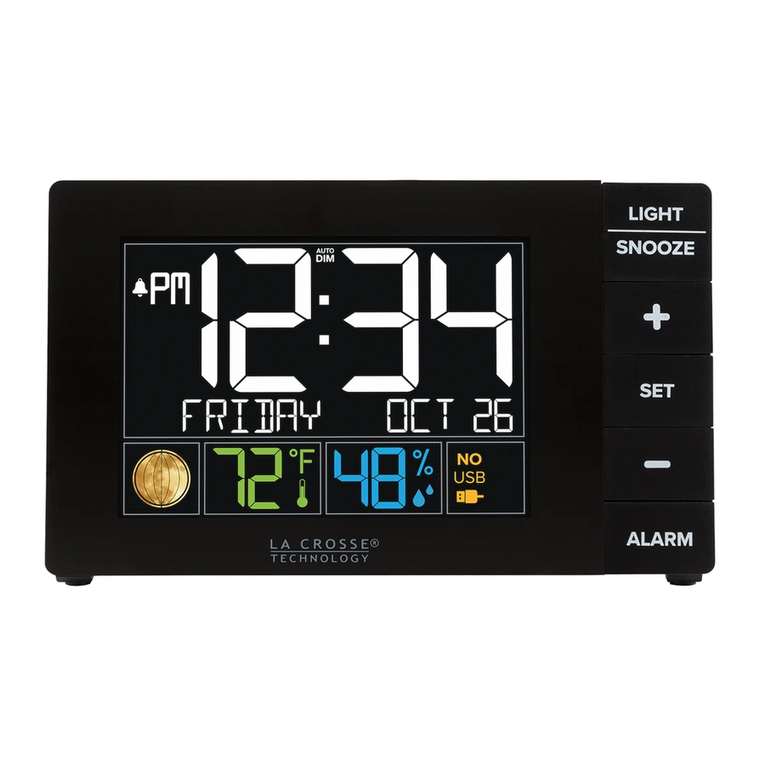
La Crosse Technology
La Crosse Technology Clock user manual

